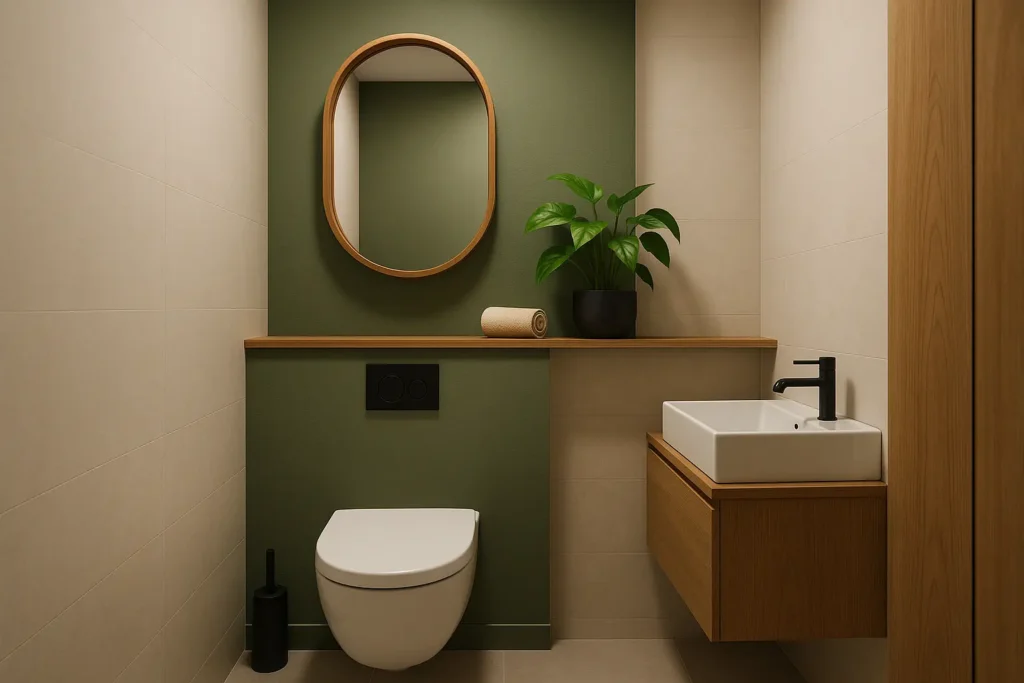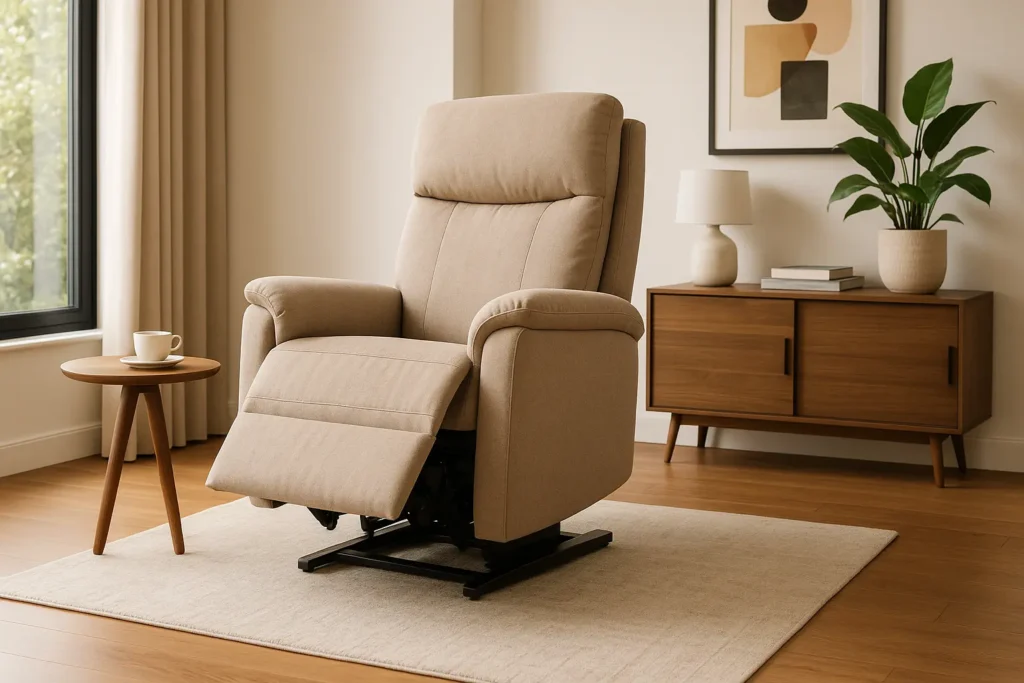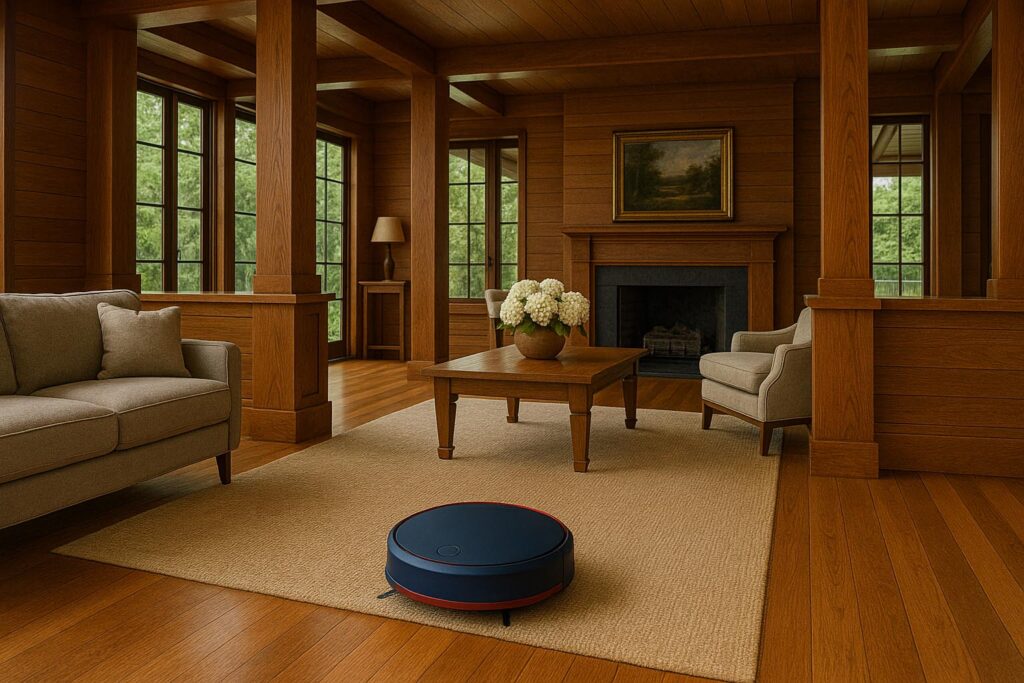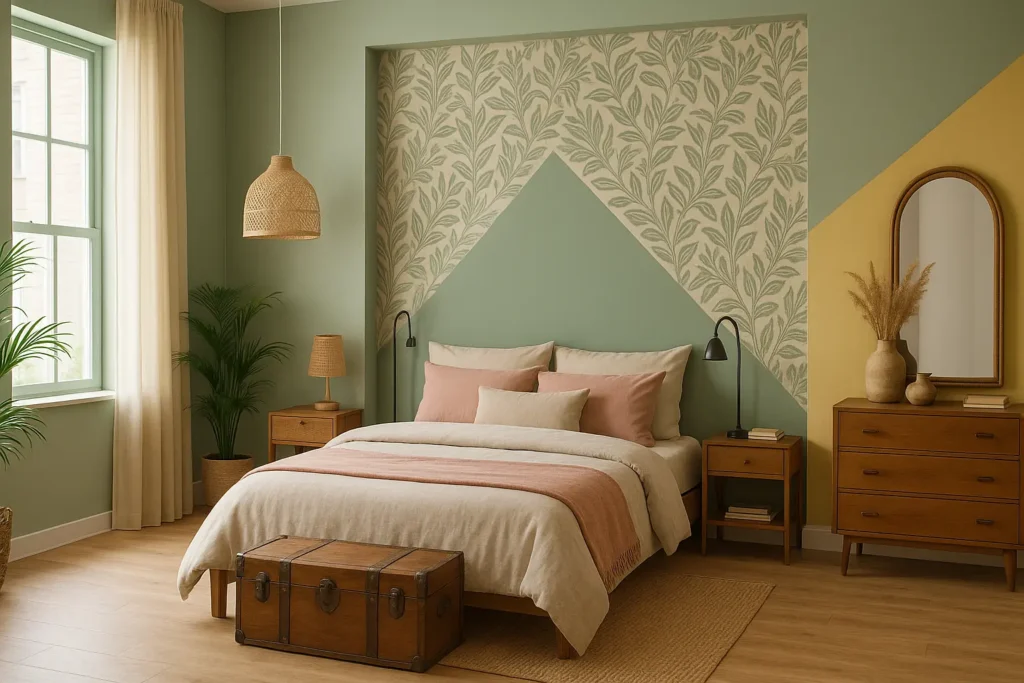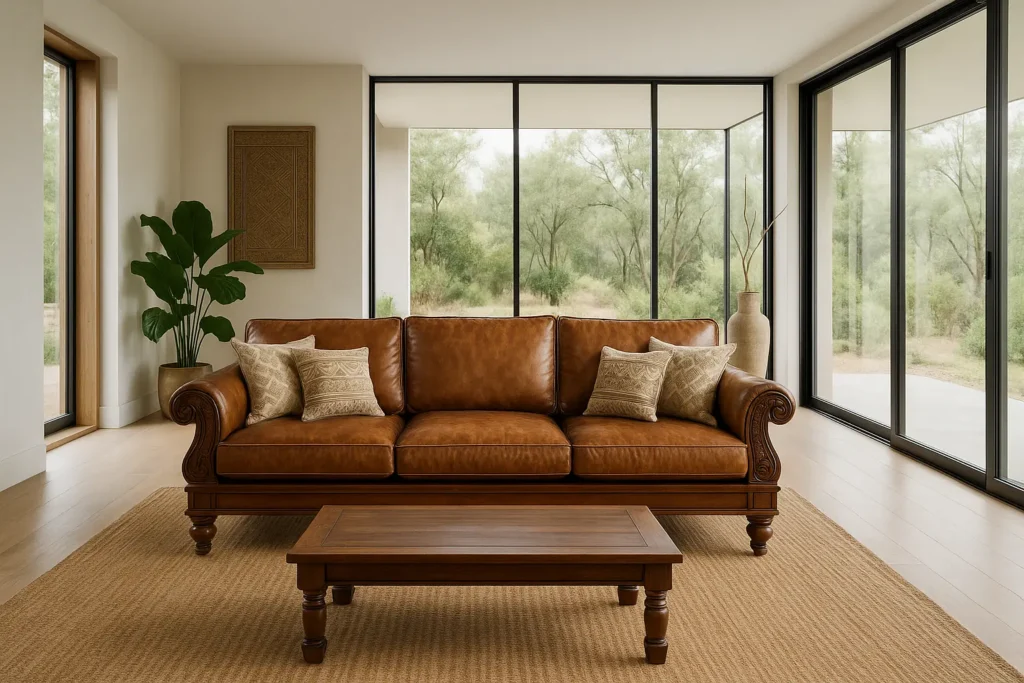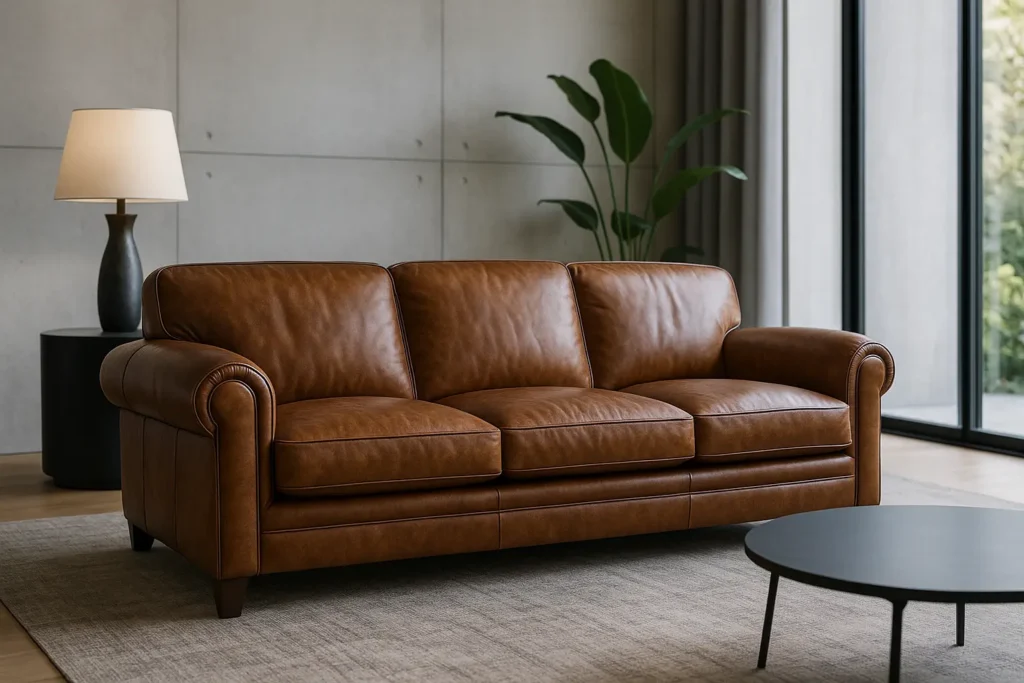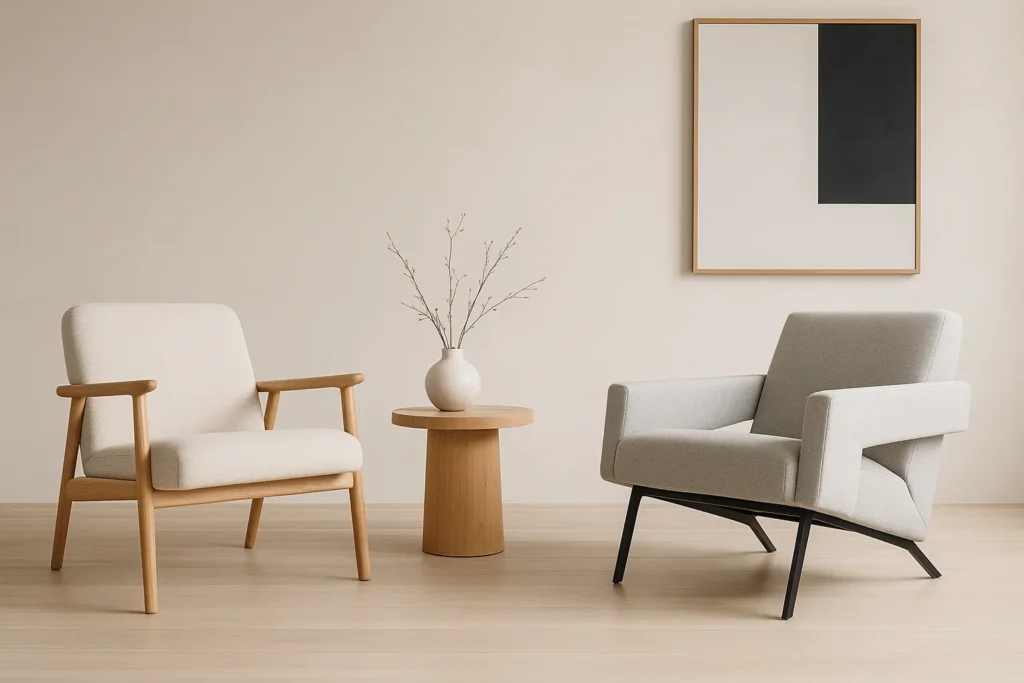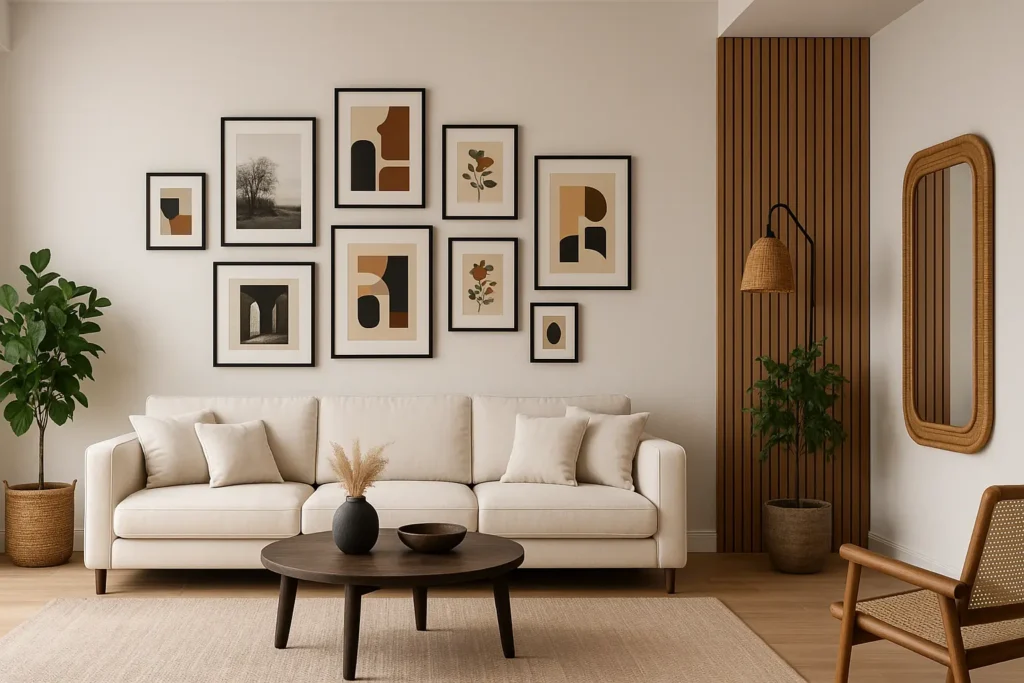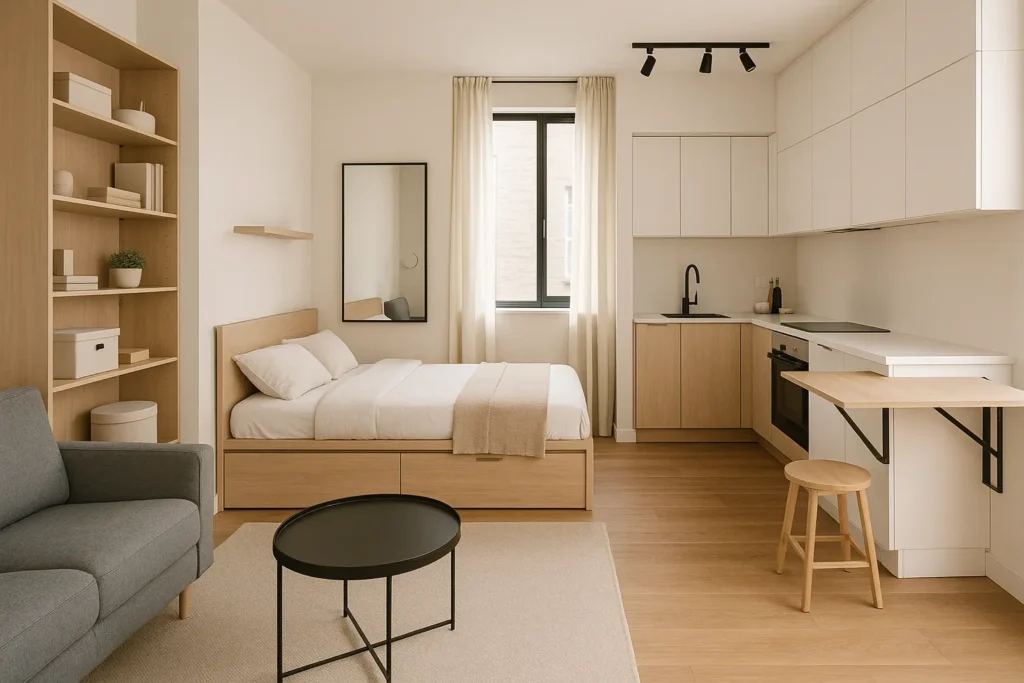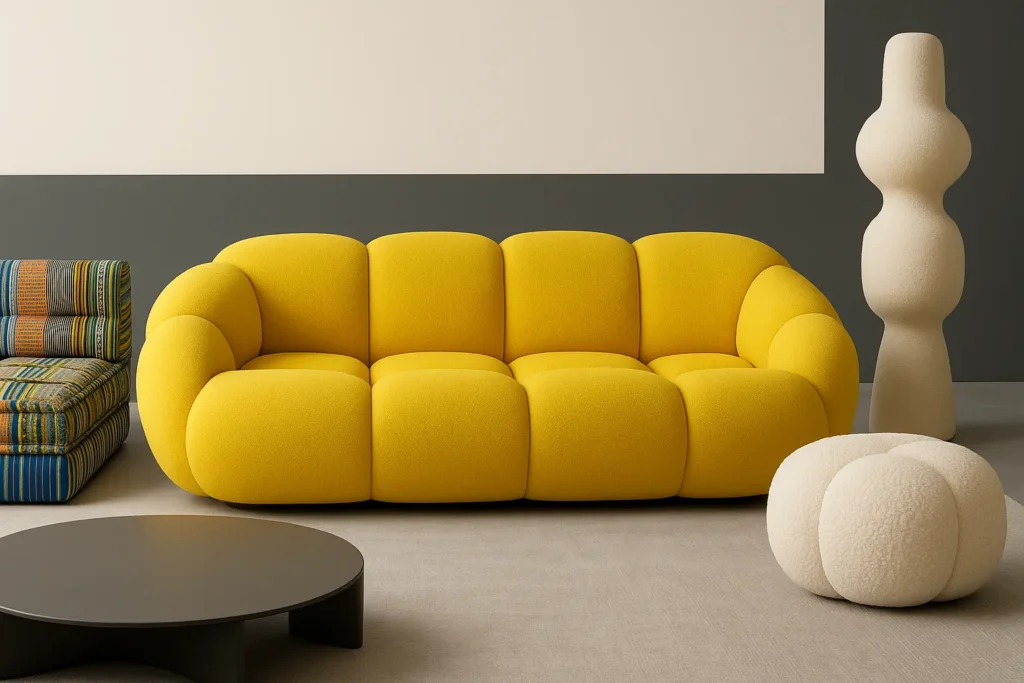When I look at the interior design trends, I am always passionate about the ability that the colonial furniture to transform an ordinary space into a haven of exoticism and elegance. This timeless piece tells stories of travel and adventure while bringing incomparable warmth to our interiors. Its unique charm lies in its authenticity and its ability to instantly create an exotic atmosphere, as if each piece of furniture were a witness to a distant expedition. Let's take a look at the essential characteristics of the colonial-style furniture in solid wood and what colonial furniture choose for each room of your House.
Our article in brief:
Colonial furniture brings warmth and exoticism to your interior with its authentic and timeless charm.
- A colonial style furniture is often made in exotic woods like the teak, L'mahogany or therubber tree
- These colonial pieces of furniture are distinguished by their warm tones ranging from honey to deep brown.
- Their unique design blends clean lines and sophisticated details. This creates pieces that elegantly transcend generations.
- Each room in the house can accommodate colonial furniture, four-poster bed to massive sideboards, including openwork bookcases.
- To create a cohesive atmosphere, combine your colonial furniture to natural materials and accessories evoking travel.
In this article
The essential characteristics of solid wood colonial furniture
THE colonial-style furniture is distinguished above all by the use of solid exotic woods Carefully selected. Mahogany, teak, rubberwood, acacia, rosewood, and mango wood are the preferred species for their robustness and natural beauty. These noble woods offer exceptional resistance over time, guaranteeing furniture that will last for generations.
Warm hues are emblematic of the colonial styleFinishes range from deep browns like nougat to brighter tones like honey or caramel. This natural palette instantly brings a sense of warmth and elegance to any room. I've found that these shades blend seamlessly into almost any interior, whether classic or contemporary.
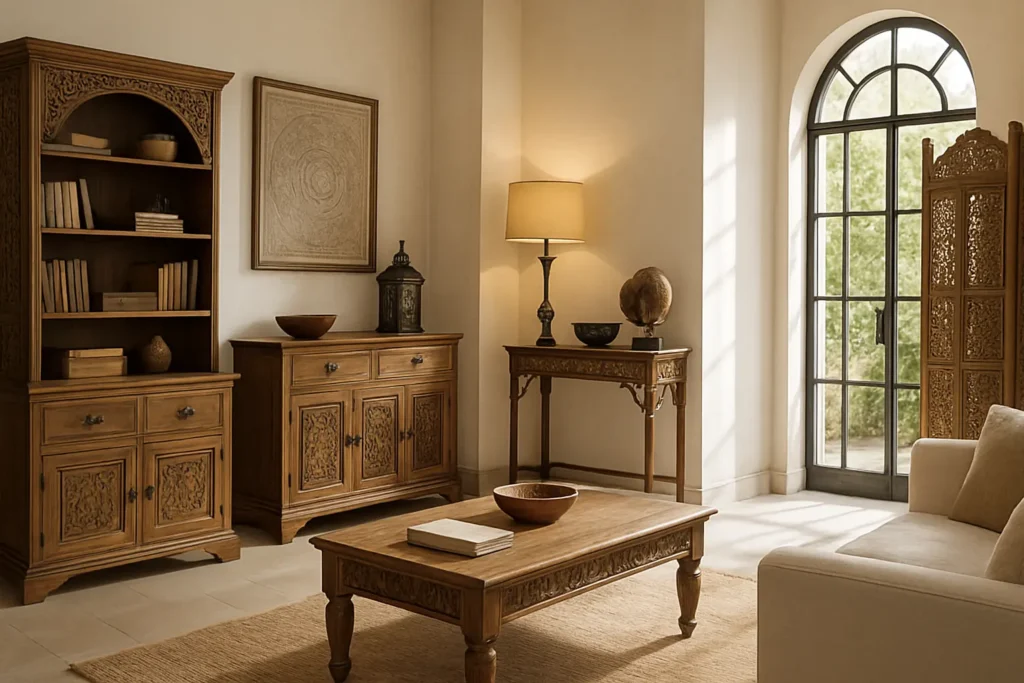
The design of the colonial-inspired furniture subtly blends traditional elements with exotic influences. The lines are generally straight and clean, but enhanced with sophisticated details such as delicate sculptures or metal elements reminiscent of wrought iron. These ornaments bring an artistic and authentic dimension that makes all the difference.
| Type of wood | Features | Available colors |
|---|---|---|
| Teak | Dense, moisture resistant, very durable | From light honey to dark brown |
| Mahogany | Noble wood with refined grain | Reddish to reddish-brown |
| Acacia | Solid, single grain without rings | Nougat honey |
| Rubber tree | Durable, fine grain | Creamy white to caramel |

For an authentic interior, we particularly appreciate The Colonial House of the furniture made from certified wood, sourced from sustainably managed forests. This ethical dimension adds additional value to these already exceptional pieces, combining beauty and respect for the environment.
Which colonial-style furniture should you choose for each room in your house?
THE colonial-style furniture comes in a multitude of pieces adapted to each living space. For the living room, solid sideboards and elegantly designed chests of drawers offer generous storage space while becoming true focal points. Exotic wood coffee tables bring a touch of authenticity and warmth to the living space.
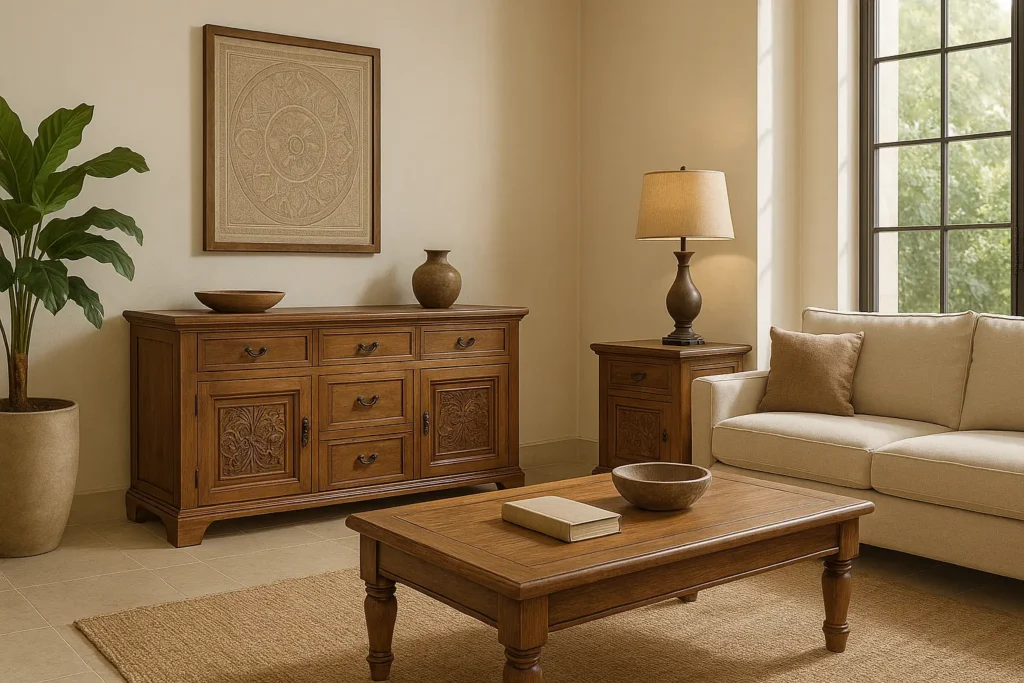
In the dining room, a rectangular solid wood table Paired with matching chairs, it instantly creates a welcoming and refined ambiance. Colonial dressers and sideboards allow you to display your precious tableware while adding character to the room. These imposing pieces of furniture often become the beating heart of the dining space.

For the bedroom, the colonial bed, sometimes with a canopy, transforms the space into an exotic and soothing retreat. Complete with matching bedside tables and a solid wood wardrobe for perfect harmony. I have always found that these sets create a particularly enveloping atmosphere and conducive to rest.
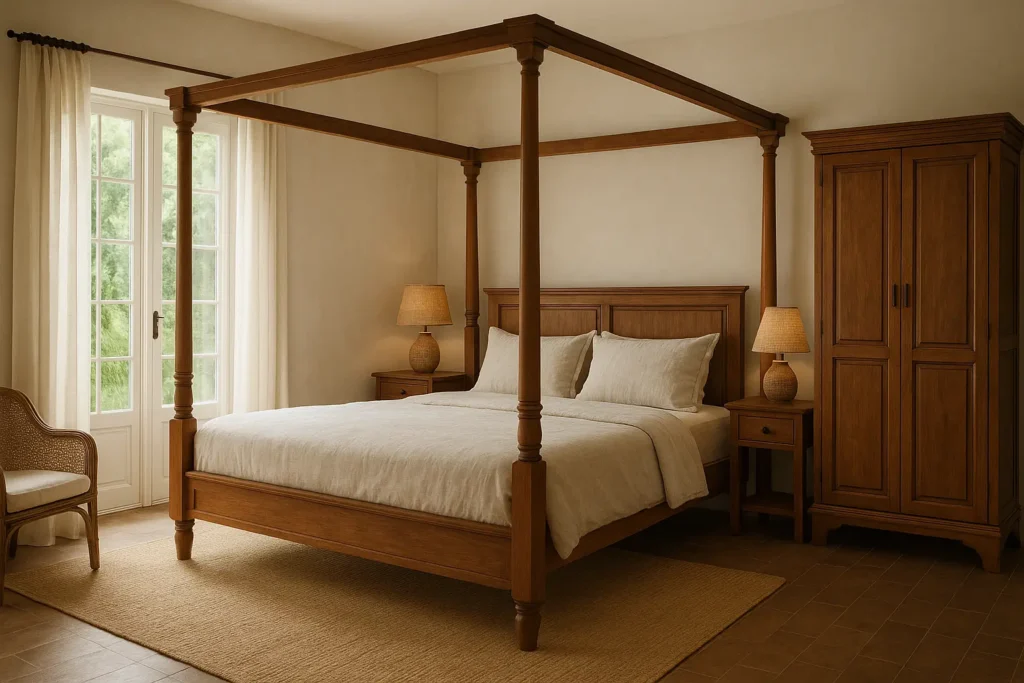
Smaller or functional spaces are not left out with options like:
- Libraries with openwork lines which visually lighten large pieces of furniture
- TV cabinets with original cutouts combining functionality and aesthetics
- Versatile storage chests serving as both benches and storage spaces
- The carved screens to delimit spaces with elegance
- Narrow consoles perfect for entrances or hallways
Even the bathroom can accommodate colonial teak furniture, particularly resistant to humidity. These pieces bring welcome warmth to a space often dominated by cold materials.
How to create an exotic atmosphere around your colonial furniture?
The art of sublimating a solid colonial furniture lies in creating a coherent atmosphere that highlights its exotic character. For this, I like to combine these pieces of furniture with complementary natural materials such as linen, driftwood, or stone. These raw textures reinforce the authenticity of the whole and create a harmonious dialogue between the elements.

Accessories play a vital role in creating a chic ethnic atmosphereObjects evoking travel, such as antique maps, navigational instruments, and nautical cords, reinforce the spirit of adventure. African sculptures, handicrafts, and textiles with ethnic motifs add a fascinating cultural dimension.
The ideal color palette to accompany colonial furniture includes:
- THE petroleum blue Or smoky turquoise for an elegant contrast
- THE tones chocolate And camel for a warm harmony
- THE Havana and the linen gray for a sophisticated atmosphere
- THE colors terracotta And sand for a sunny touch

Soft, warm lighting enhances the wood's nuances and creates a cozy atmosphere. I often opt for lamps with natural shades or lanterns that diffuse a subdued light, ideal for highlighting the carved details of colonial furniture.
One of the aspects that I particularly appreciate with the colonial furniture is the possibility of play on contrasts by integrating these pieces into a contemporary decor. A stately colonial sideboard can become a striking centerpiece in an interior with clean, modern lines. This fusion of styles creates unique, personal, and timeless spaces.
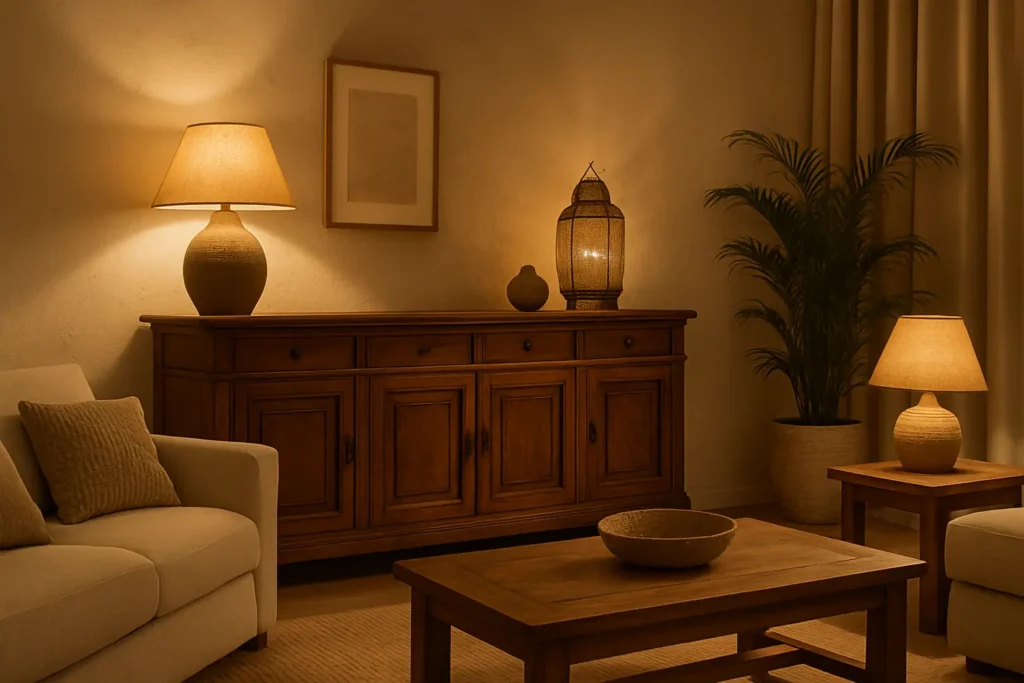
Different colonial styles to diversify your decor
THE colonial furniture comes in several styles, each evoking different horizons. The traditional colonial style is characterized by its timeless elegance, dark hues, and sophisticated details. It evokes the atmosphere of colonial homes of yesteryear, with their refinement and nobility.
THE colonial Asian style stands out for its atypical lines and Zen aesthetic. More refined, it often incorporates precise geometric elements and smooth finishes. These pieces of furniture bring contemplative serenity and understated elegance to contemporary interiors.
For lovers of wilder atmospheres, the African style evokes the vast expanses of the savannah and nature in its raw state. Animal motifs, sculptures representing local fauna, and zebra-striped fabrics perfectly complement this furniture for total immersion.
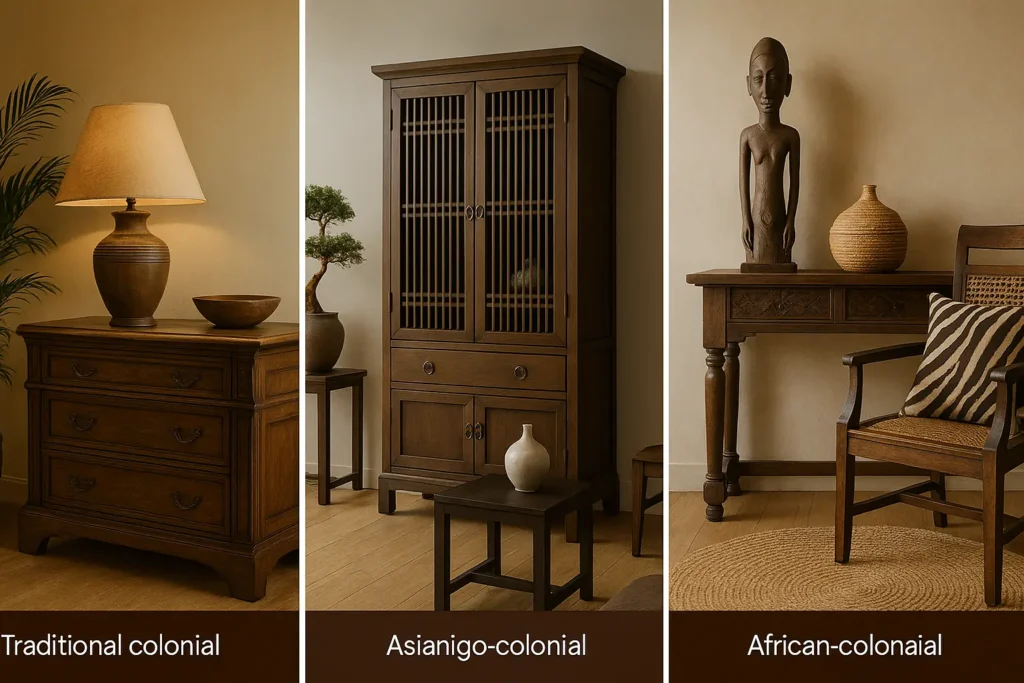
THE rattan and natural fibers are also invited into the family of colonial furniture, bringing lightness and authenticity. These materials create an ambiance that is both exotic and vintage, reminiscent of tropical villas of yesteryear. Their airy appearance contrasts harmoniously with the solidity of solid wood.

Maintaining your precious colonial furniture is relatively simple: a dry or slightly damp microfiber cloth is usually sufficient. To preserve its beauty over time, I avoid placing wet or hot objects directly on the wood and I use specific care products. These small touches ensure that your colonial furniture will accompany you for many years, gaining in character over time.
